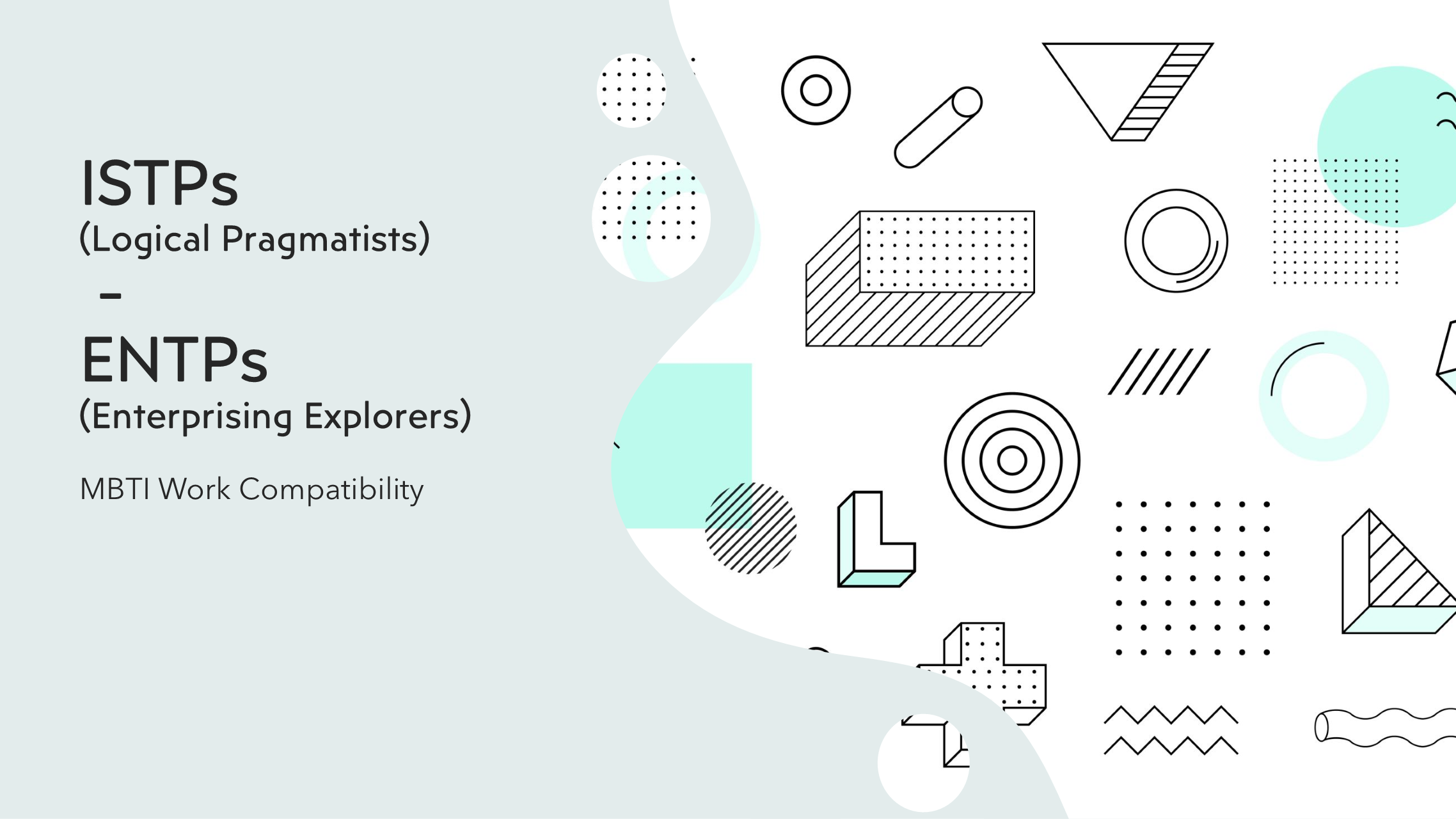
MBTI Work Compatibility - How ISTPs and ENTPs can work well together
When it comes to workplace collaboration, the ISTP (Introverted, Sensing, Thinking, Perceiving) and ENTP (Extraverted, Intuitive, Thinking, Perceiving) personalities offer a unique dynamic that can lead to innovation and success if their differences are well-managed. While these two Myers-Briggs personality types approach life and work in contrasting ways, they can complement each other’s strengths and weaknesses. In this blog, we’ll explore how ISTPs and ENTPs can work together effectively, fostering both productivity and harmony.
The ISTP Approach: Pragmatic and Hands-On
ISTPs are often referred to as “Virtuosos” due to their love for experimentation and problem-solving. They thrive in environments where they can apply their practical skills and directly engage with the world around them. Known for their logical and pragmatic thinking, ISTPs prefer tangible results and often focus on fixing issues as they arise, whether that’s troubleshooting a problem or finding an efficient path to complete a task. ISTPs dislike unnecessary rules and prefer autonomy in their work. They excel when allowed to independently explore, test new tools, or handle tasks that require technical expertise. However, ISTPs can also be quiet and reserved, often requiring space to recharge after a period of intense focus.
The ENTP Approach: Innovative and Theoretical
ENTPs, also called “Debaters,” are known for their quick wit, intellectual curiosity, and love for mental challenges. They are future-oriented, always looking for ways to innovate and improve existing systems. Unlike the ISTP’s hands-on approach, ENTPs prefer to theorize, debate, and explore new ideas. This personality type thrives on mental stimulation and enjoys being at the center of discussions about new strategies or creative problem-solving. Although ENTPs are logical thinkers, they can sometimes get lost in their ideas, overlooking practical details or jumping from one idea to the next without fully executing any one concept. This can frustrate more grounded colleagues like ISTPs, who prefer to focus on the tangible here and now rather than hypothetical scenarios.
The Potential Challenges: Grounding Theory with Action
At first glance, ISTPs and ENTPs may seem like polar opposites. ISTPs are action-oriented and pragmatic, while ENTPs are abstract thinkers who often prioritize theory over practice. Communication styles also differ: ISTPs are concise, factual, and focused on practical results, while ENTPs love to engage in lively debates about abstract ideas. This can lead to frustration if each party is unwilling to bridge the gap. For example, ISTPs may find ENTPs too theoretical and impractical, while ENTPs might view ISTPs as too focused on the immediate and concrete, overlooking long-term potential. However, these differences can also become the foundation of a strong working relationship, provided both sides are willing to adapt.
Finding Common Ground: Bridging the Divide
The key to a successful ISTP-ENTP collaboration is recognizing that each personality type brings valuable skills to the table. When ISTPs and ENTPs focus on their strengths while respecting each other's differences, their partnership can thrive.
1. Playing to Each Other’s Strengths: The ISTP’s practical skills can help ground the ENTP’s innovative ideas in reality. If the ENTP comes up with a new approach, the ISTP can work out the details and find a feasible way to implement the idea. Conversely, ENTPs can help ISTPs think beyond the immediate and consider long-term strategies or innovative ways to solve recurring problems.
2. Clear and Open Communication: ISTPs value straightforward, fact-based communication, while ENTPs enjoy exploring ideas through discussion. By being mindful of these differences, each can adapt their communication style. ISTPs can benefit from being more open to discussing abstract concepts, while ENTPs can work on grounding their ideas in practical terms.
3. Balancing Innovation with Execution: ENTPs often thrive when brainstorming new ideas, while ISTPs excel at executing those ideas with precision. By allowing the ENTP to take the lead on creative problem-solving and strategy, and the ISTP to handle the implementation, the team can achieve a productive balance of innovation and action.
4. Setting Boundaries and Respecting Personal Preferences: ENTPs are energized by social interactions and intellectual debates, whereas ISTPs tend to need more solitude to recharge. It’s important for ENTPs to respect the ISTP’s need for space, while ISTPs can challenge themselves to engage in discussions and idea-sharing sessions more frequently.
5. Shared Hobbies and Interests: Both ISTPs and ENTPs share a Perceiving trait, which makes them adaptable and open to new experiences. This commonality can help them bond outside of work, whether through shared hobbies or spontaneous adventures. These positive interactions can spill over into their professional relationship, making collaboration easier and more enjoyable.
Maximizing Collaboration in Daily Work Life
To make the most of their partnership, ISTPs and ENTPs can create a workflow that plays to their strengths. For example, the ENTP might excel at leading brainstorming sessions or proposing strategic initiatives, while the ISTP can take charge of detailed project management and execution. Additionally, both types prefer flexibility over rigid routines, making them well-suited for dynamic work environments where creativity and adaptability are required. By creating a balance of innovation and practical application, this duo can achieve both short-term wins and long-term success.
Conclusion: Embracing Differences for Success
The ISTP-ENTP relationship has the potential to be highly successful when both sides respect their differences and collaborate effectively. By understanding each other’s strengths, ISTPs and ENTPs can complement one another, balancing practical execution with creative innovation. With a little compromise and clear communication, this dynamic pair can turn their contrasting traits into powerful tools for success.